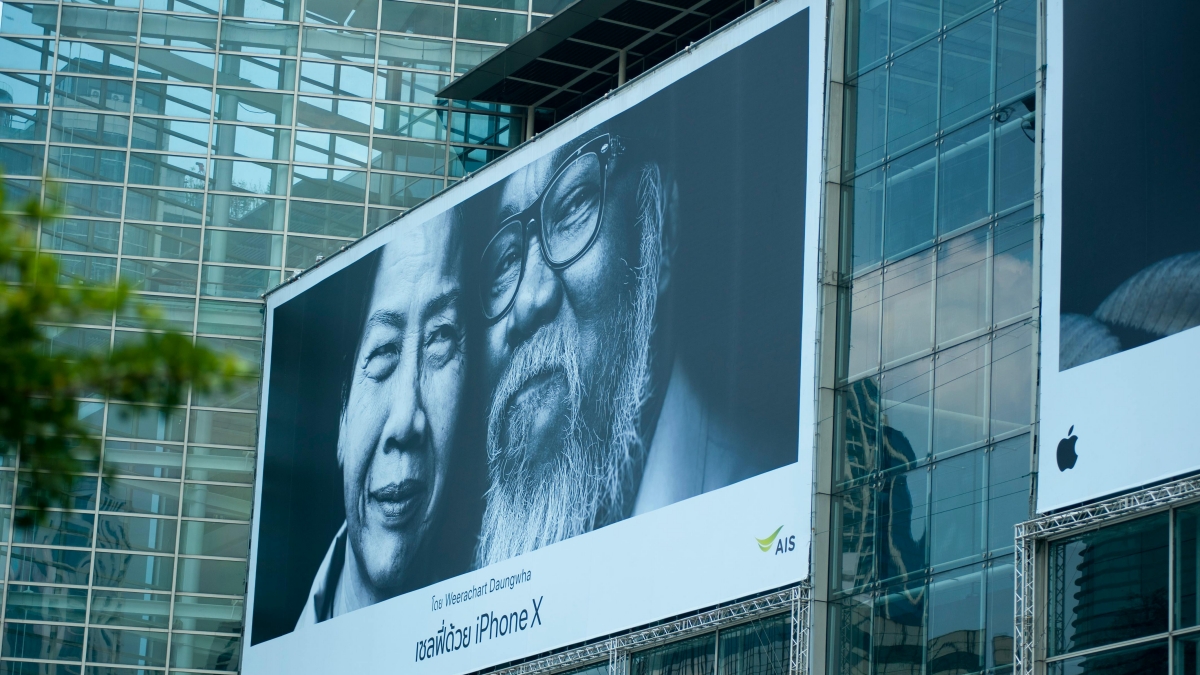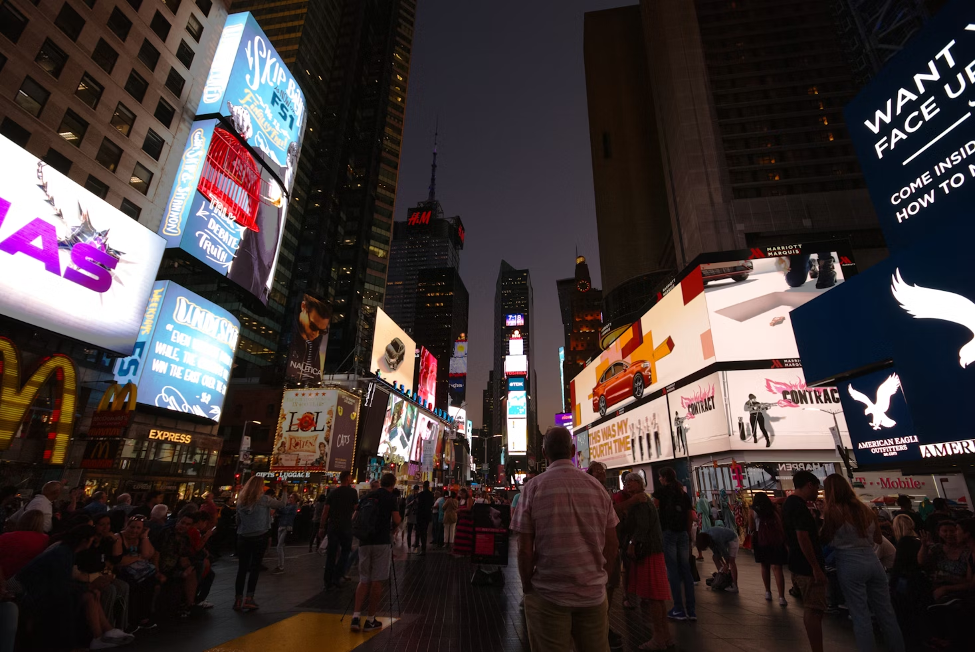
In an era dominated by digital marketing strategies, the effectiveness of traditional outdoor advertising is often questioned. However, the power of billboards, posters, and other outdoor mediums should not be underestimated. This blog explores the evolution of outdoor advertising, its advantages, challenges in the digital age, successful strategies, and the role of technology. By examining case studies and offering practical tips, we aim to answer the crucial question: Is outdoor advertising still effective in the digital age?
Table of Contents
The Evolution of Outdoor Advertising
A. Historical Overview
Outdoor advertising has a rich history, dating back to ancient civilizations using signage to convey messages. Over the centuries, it evolved with the invention of printing, leading to the iconic billboards and posters that characterize modern outdoor advertising.
B. Adaptations to Technological Advancements
Adaptations to technological advancements have played a pivotal role in transforming outdoor advertising from static billboards to dynamic, data-driven sales strategies. Embracing digital technologies, such as programmable digital billboards and interactive displays, has allowed advertisers to create more engaging and targeted campaigns. The integration of technology enables real-time adjustments to content, optimizing sales strategy effectiveness. Additionally, the use of data analytics and geotargeting refines the precision of outdoor advertising, ensuring that messages resonate with specific demographics. In essence, the evolution of outdoor advertising reflects a strategic fusion of traditional visibility with modern sales strategies, demonstrating the industry’s ability to leverage technology for greater impact and relevance in a dynamic marketing landscape.
Advantages of Outdoor Advertising
A. Wide Reach and Visibility
One of the enduring strengths of outdoor advertising lies in its unparalleled wide reach and visibility. Strategically placed billboards, posters, and other outdoor mediums can capture the attention of a vast audience, especially in high-traffic locations. This expansive reach ensures that the advertising message is exposed to thousands of potential customers daily. Whether along busy highways or in urban centers, the sheer visibility of outdoor ads contributes to brand awareness and recognition. The broad exposure offered by outdoor advertising continues to be a fundamental advantage, allowing businesses to make a significant impact and connect with diverse audiences on a large scale.
B. Targeted Local Advertising
Outdoor advertising excels in providing businesses with the opportunity for targeted local advertising. By strategically placing ads in specific geographic areas, businesses can tailor their messages to resonate with the local community. This localized approach is particularly beneficial for establishments with physical locations seeking to attract nearby customers. From neighborhood billboards to posters in local transit hubs, outdoor advertising allows businesses to create a strong local presence, fostering a connection with the community and increasing the likelihood of engaging with their target audience effectively. This ability to target specific locales ensures that the advertising efforts align with the interests and needs of the local population, contributing to the overall success of the campaign.
C. High Impact and Brand Recognition
The high impact and brand recognition achieved through outdoor advertising remain distinctive and powerful in the marketing landscape. The sheer size, visual appeal, and strategic placement of billboards, posters, and other outdoor mediums make them iconic and memorable. These elements contribute to creating a lasting impression on viewers, fostering brand recognition over time. Outdoor advertising’s ability to convey messages in a bold and visually striking manner enhances its impact, ensuring that the brand stands out amid the visual noise. The combination of impactful design and widespread visibility leads to increased brand recall, making outdoor advertising a formidable tool for building and reinforcing brand recognition in the minds of consumers.
Challenges in the Digital Age
A. Competition from Digital Channels
In the digital age, outdoor advertising faces stiff competition from various digital marketing channels. Digital platforms offer advertisers the advantages of precise targeting, real-time analytics, and interactive engagement, making it challenging for traditional outdoor mediums to keep pace. The ability to measure return on investment (ROI) and track campaign effectiveness is more readily available in digital channels, posing a hurdle for outdoor advertising. However, savvy marketers recognize that a complementary approach that integrates both traditional and digital strategies can offer a comprehensive solution. Striking a balance between the expansive reach of outdoor advertising and the targeted capabilities of digital channels allows businesses to navigate the competitive landscape effectively and maximize their overall marketing impact.
B. Measuring ROI and Effectiveness
Measuring return on investment (ROI) and effectiveness poses a challenge for outdoor advertising compared to the more data-driven nature of digital channels. Unlike digital marketing, which offers precise metrics and analytics, determining the direct impact of outdoor campaigns on sales or conversions can be complex. Advertisers often rely on indirect indicators such as increased foot traffic, brand recall surveys, or promotional code usage. Despite these challenges, innovative technologies, such as QR codes or unique tracking URLs on outdoor ads, are emerging to bridge the gap between traditional and digital measurement methods. Striking a balance between quantitative and qualitative assessment allows advertisers to gain insights into the effectiveness of outdoor campaigns and make informed decisions to optimize their marketing strategies.
C. Addressing Short Attention Spans
Addressing short attention spans is a critical consideration for outdoor advertising campaigns. In an era where consumers are bombarded with information, capturing attention swiftly is essential. Outdoor ads must convey a compelling message within a brief glance, leveraging bold visuals, concise copy, and impactful design. Creativity plays a pivotal role in creating memorable and attention-grabbing content that resonates with viewers in the fleeting moments they interact with the ad. By understanding the need for brevity and making every second count, advertisers can overcome the challenge of short attention spans and ensure that their outdoor campaigns leave a lasting impression on the audience.
Successful Outdoor Advertising Strategies
A. Integration with Digital Platforms
Successful outdoor advertising campaigns often integrate with digital platforms. QR codes, social media handles, or hashtags on billboards encourage consumers to engage online, bridging the gap between traditional and digital marketing.
B. Creativity and Memorable Design
Creativity remains a cornerstone of successful outdoor advertising. Memorable design, compelling visuals, and concise messaging are crucial for capturing attention and leaving a lasting impression on viewers.
C. Leveraging Location-Based Targeting
Utilizing location-based targeting enhances the effectiveness of outdoor campaigns. Tailoring messages to specific geographic areas ensures relevance and resonance with the local audience.
Tips for a Successful Outdoor Advertising Campaign
A. Understanding Your Audience
Knowing your target audience is fundamental to crafting an effective outdoor advertising campaign. Tailor your messaging, visuals, and placement to resonate with the demographics and preferences of your ideal customers.
B. Choosing the Right Locations
Strategic placement is key to the success of outdoor advertising. Select locations with high foot traffic, where your target audience is likely to see and engage with your ads.
C. Consistency Across Offline and Online Channels
Maintaining consistency across offline and online channels reinforces brand identity. Ensure that the messaging and visuals align with your overall marketing strategy, creating a cohesive brand experience for consumers.
The Future of Outdoor Advertising
A. Emerging Trends and Innovations
As technology continues to evolve, outdoor advertising is poised for further innovation. Augmented reality, AI-driven content, and sustainable practices are among the emerging trends shaping the future of outdoor advertising.
B. Sustainability and Eco-Friendly Campaigns
With environmental consciousness on the rise, sustainability is becoming a focal point for outdoor advertising. Eco-friendly materials, energy-efficient displays, and campaigns promoting environmental causes resonate positively with consumers.
C. Collaborations with Digital Marketing Strategies
The future of outdoor advertising lies in collaborative efforts with digital marketing strategies. Integrating data-driven insights, personalized content, and real-time interactivity will redefine the landscape of outdoor advertising in the digital age.

In conclusion, outdoor advertising remains a potent force in the marketing landscape, capable of delivering tangible results in the digital age. While challenges exist, the adaptability of outdoor advertising, coupled with creative strategies and technological integration, ensures its continued relevance. As businesses navigate the evolving marketing landscape, embracing a balanced approach that combines the strengths of both traditional and digital channels will maximize their outreach and impact on potential customers.